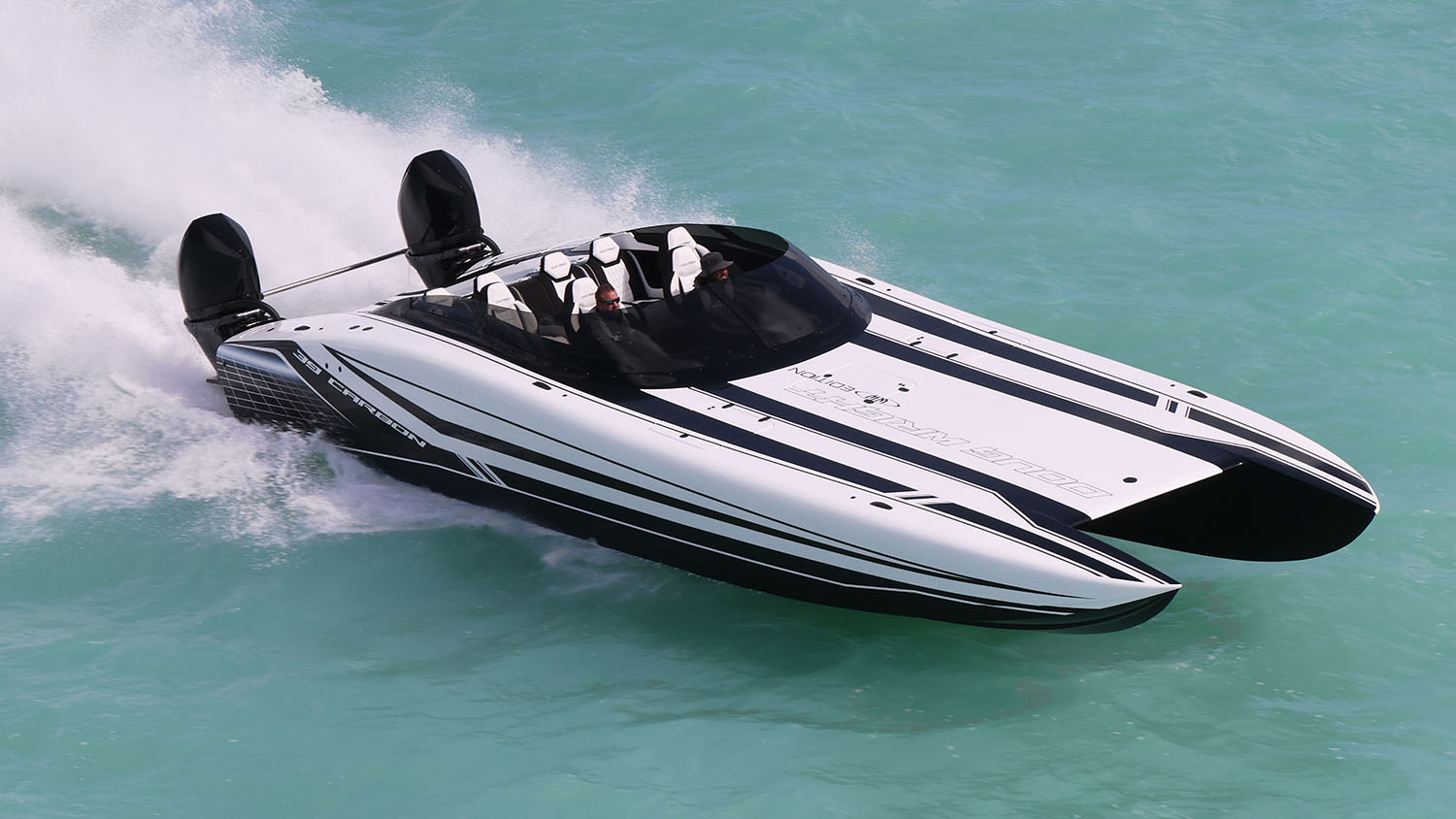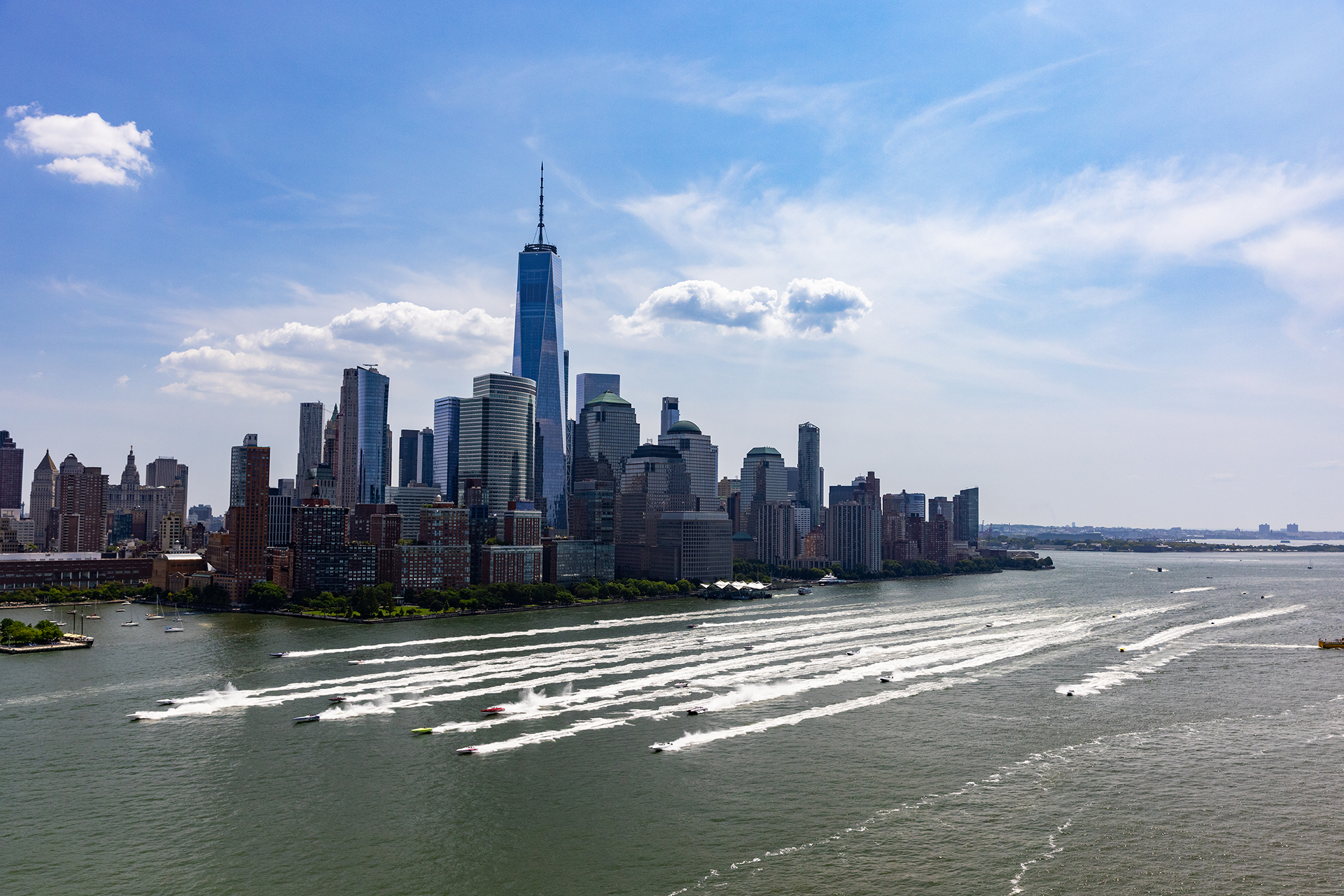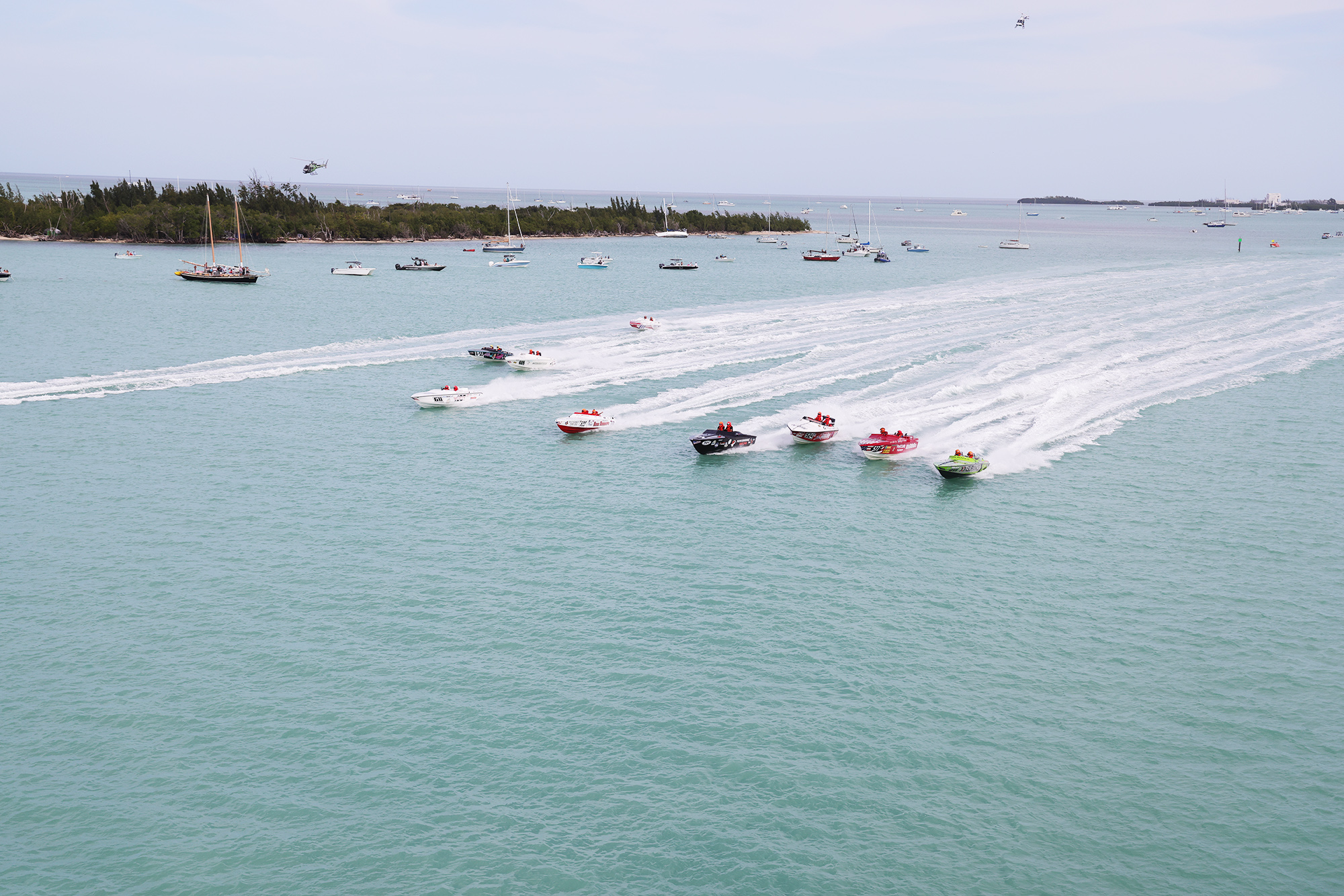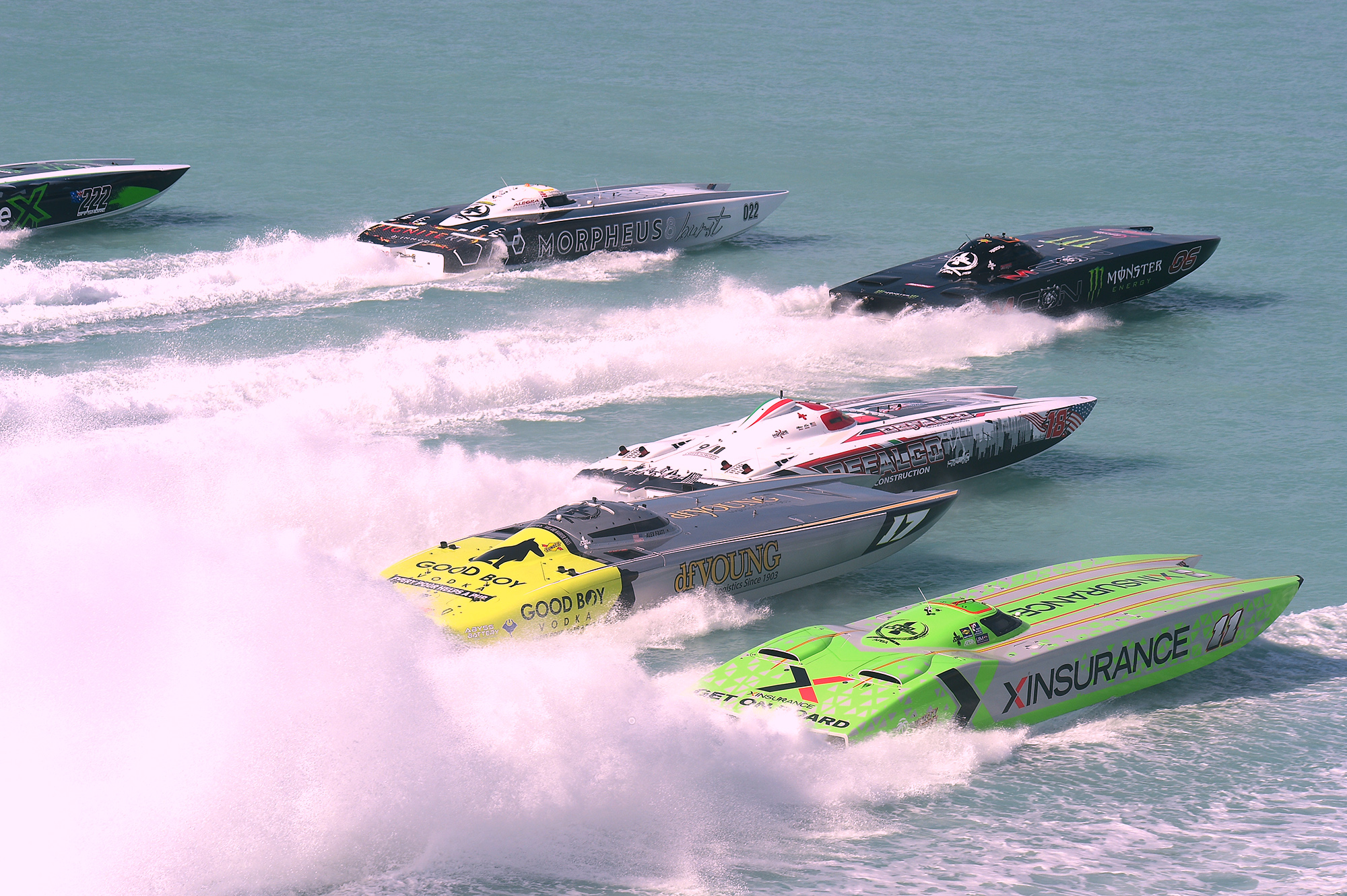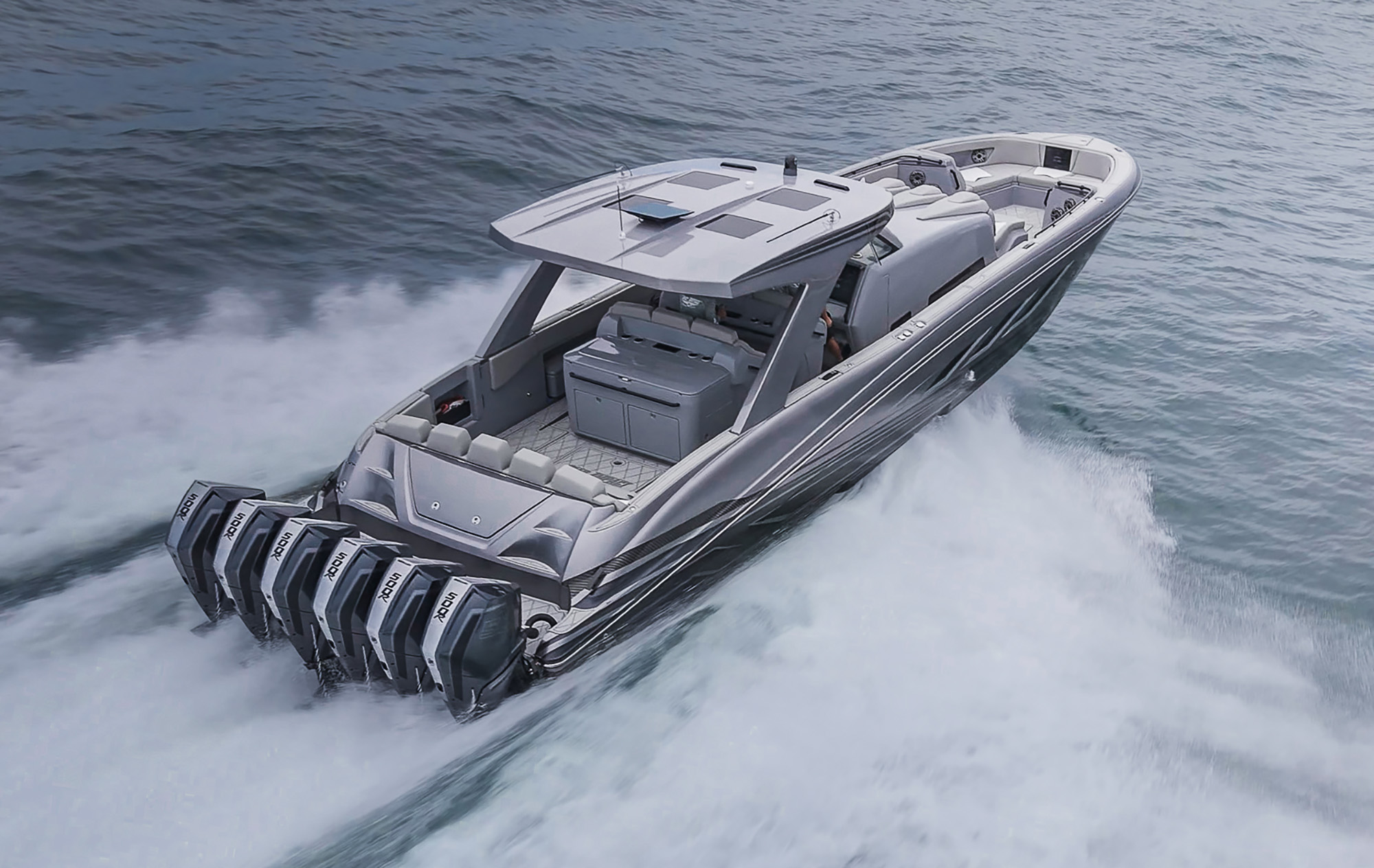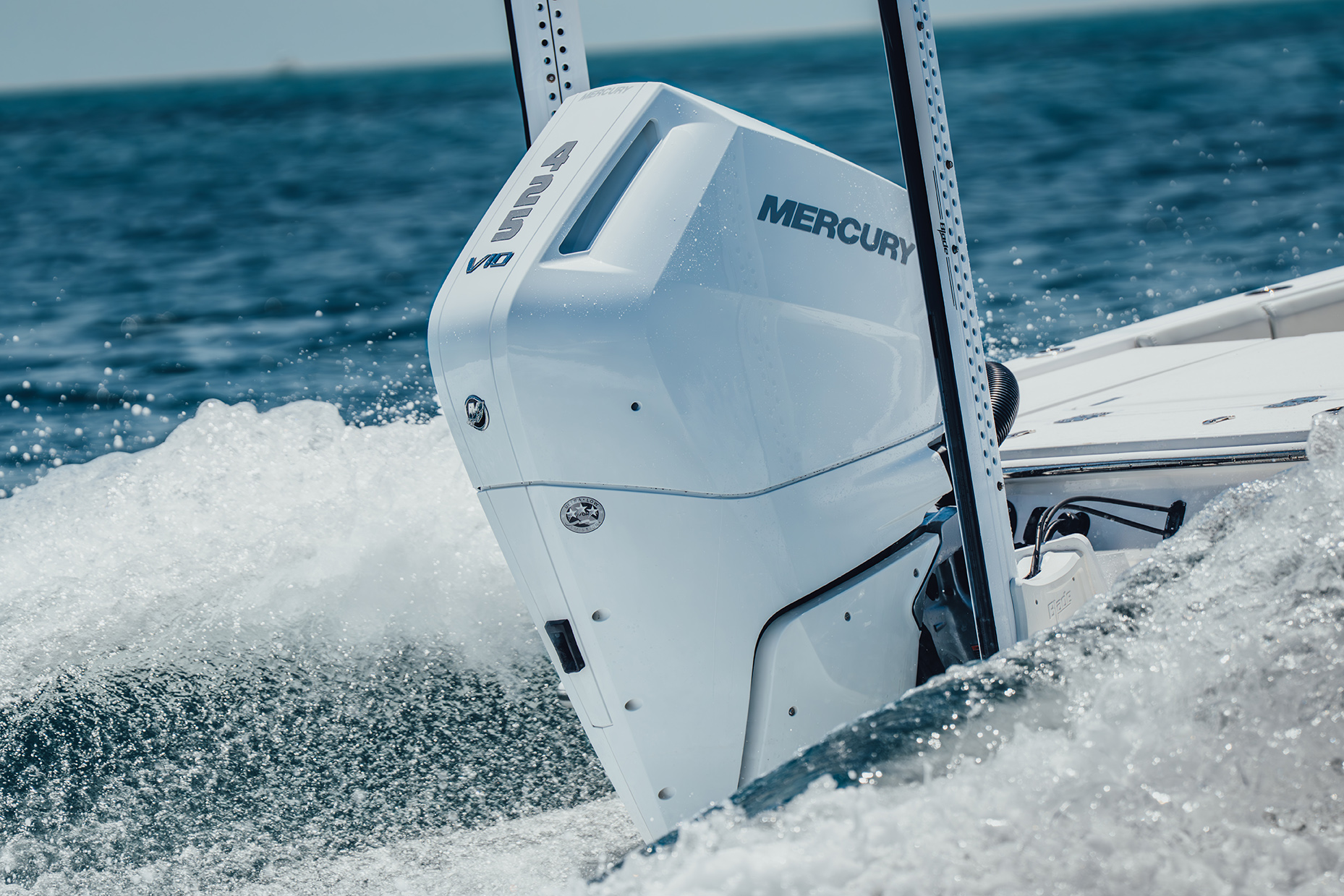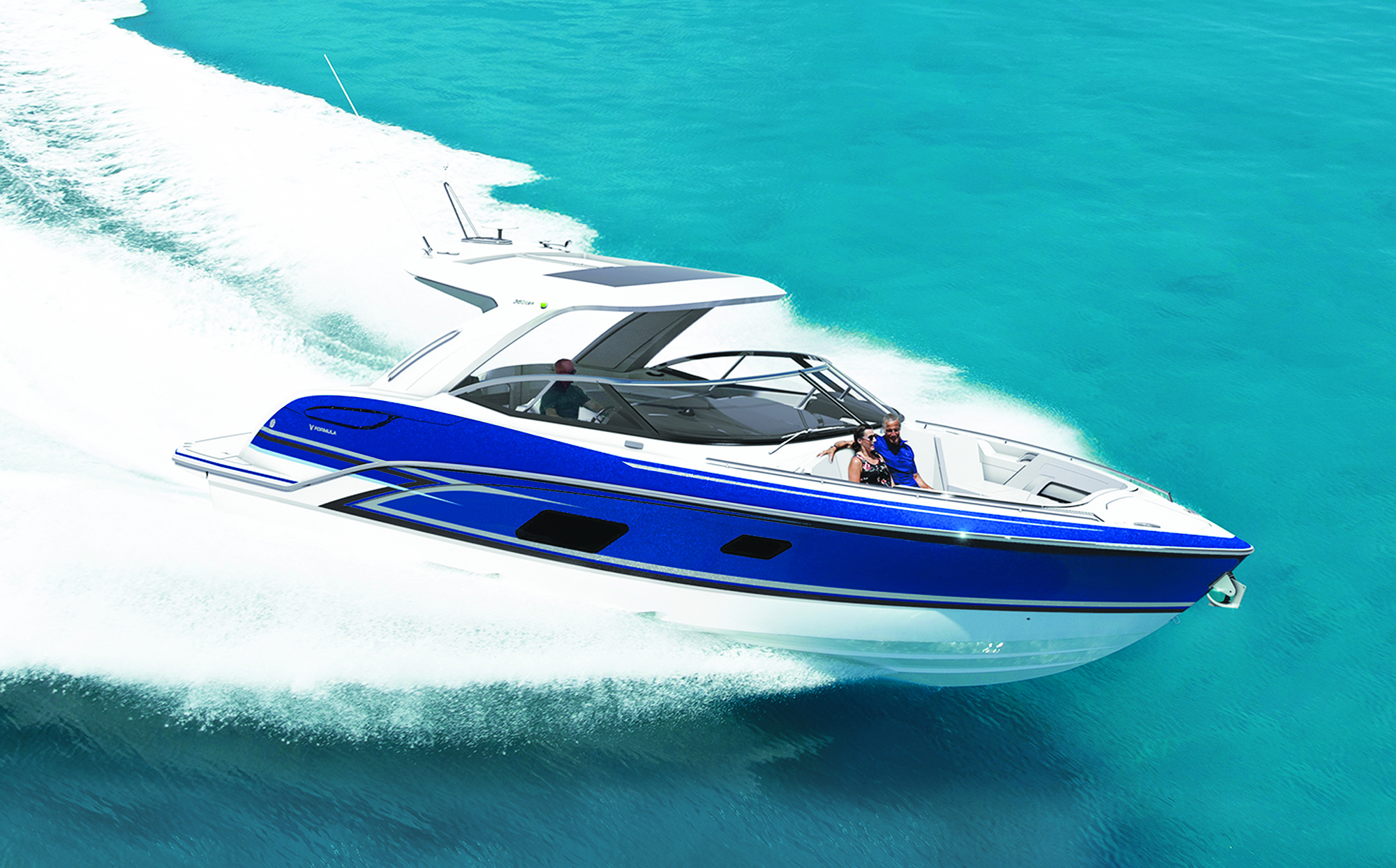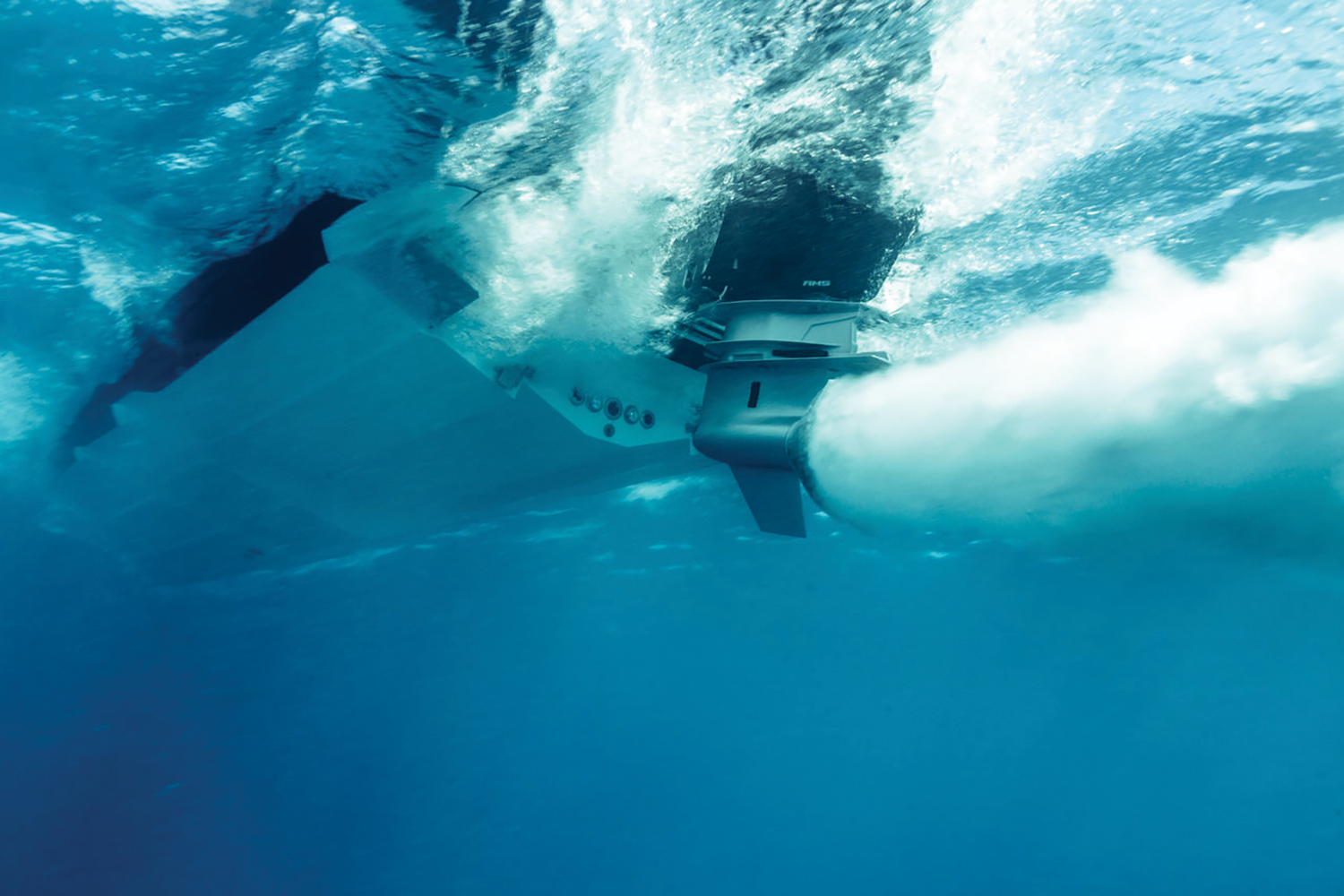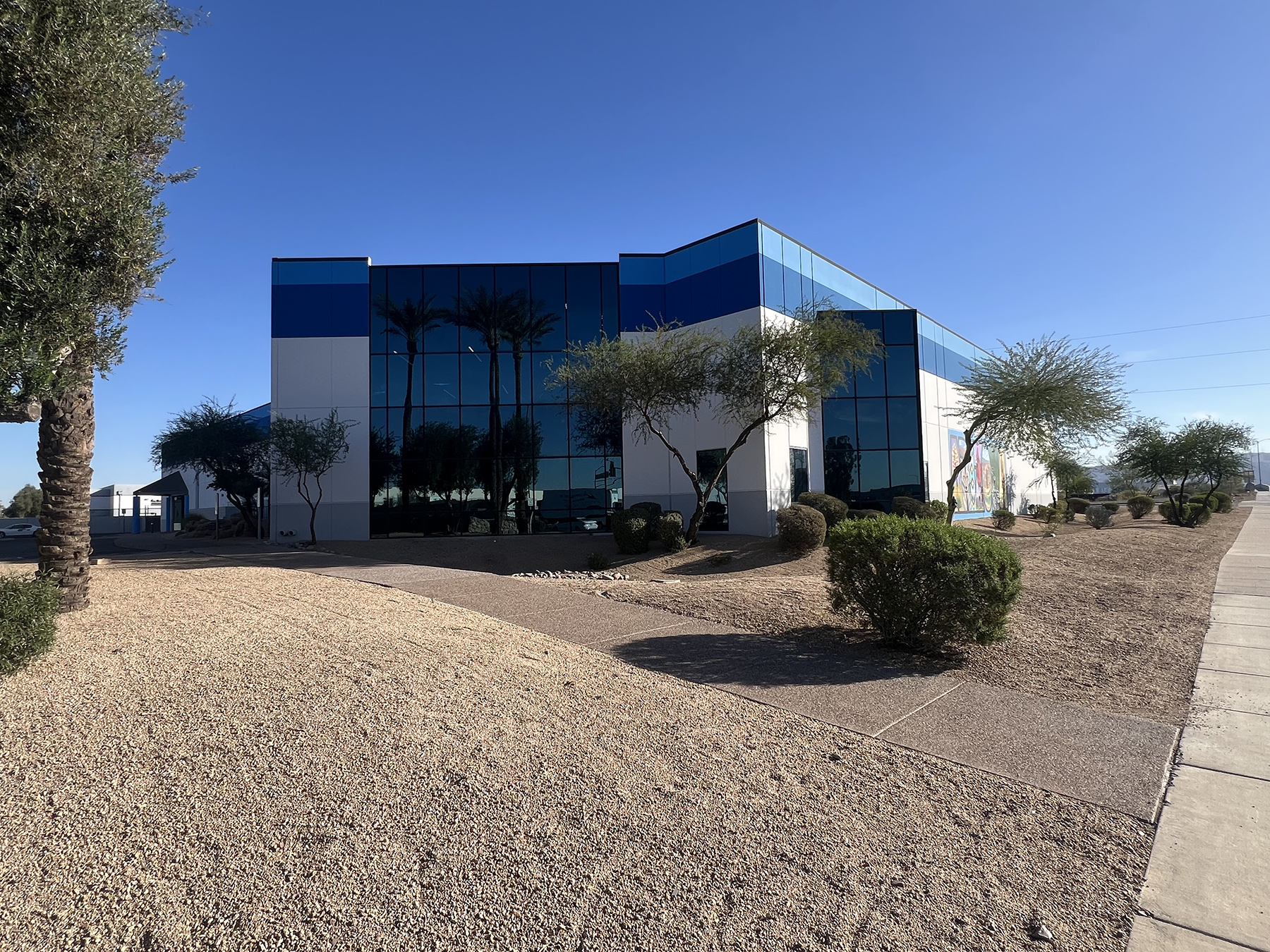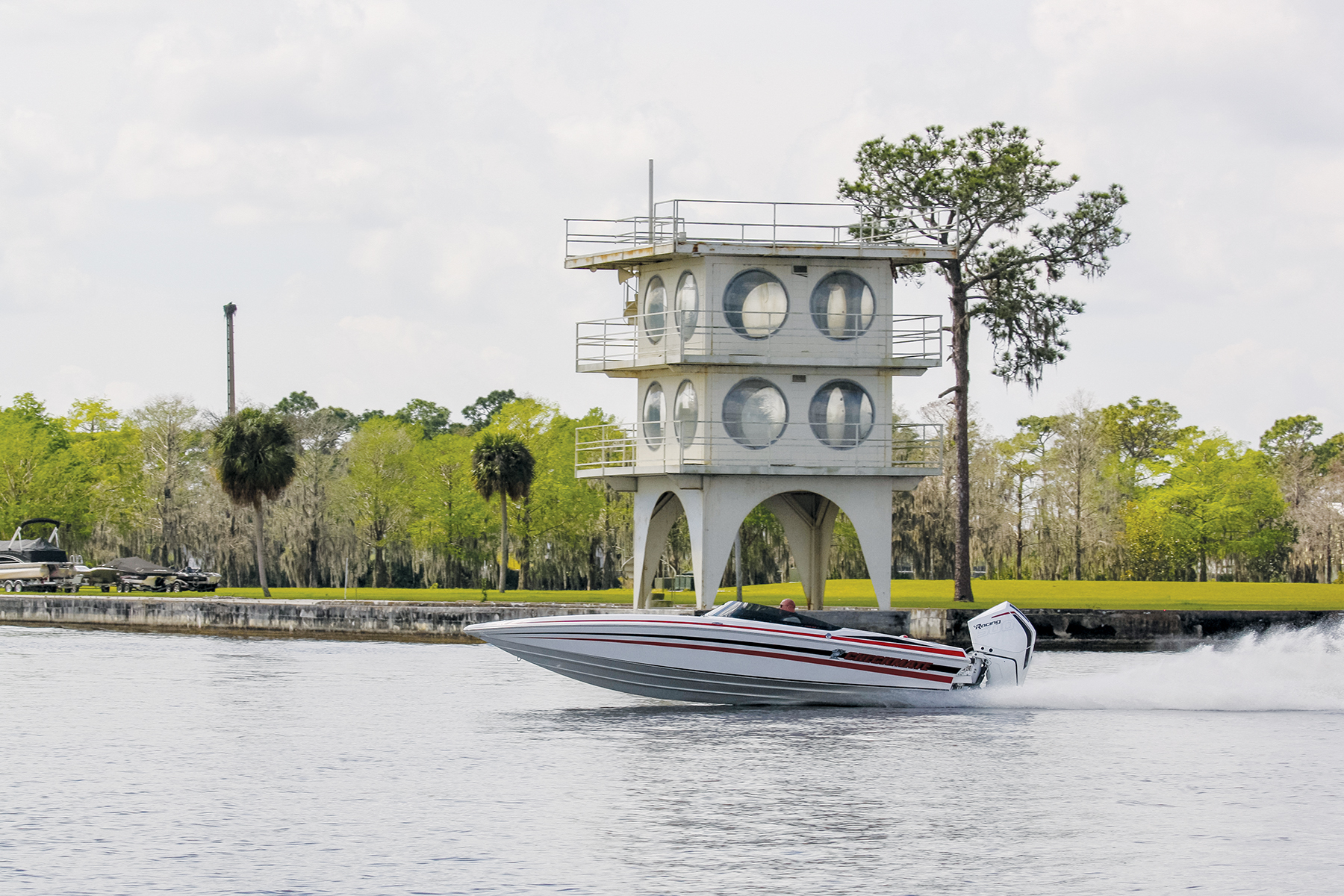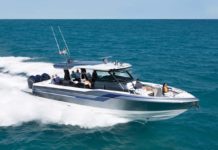Al Copeland reflects on the art of performance
From our vaults 1997 – Volume 1 Number 2
By: Peter Tasler
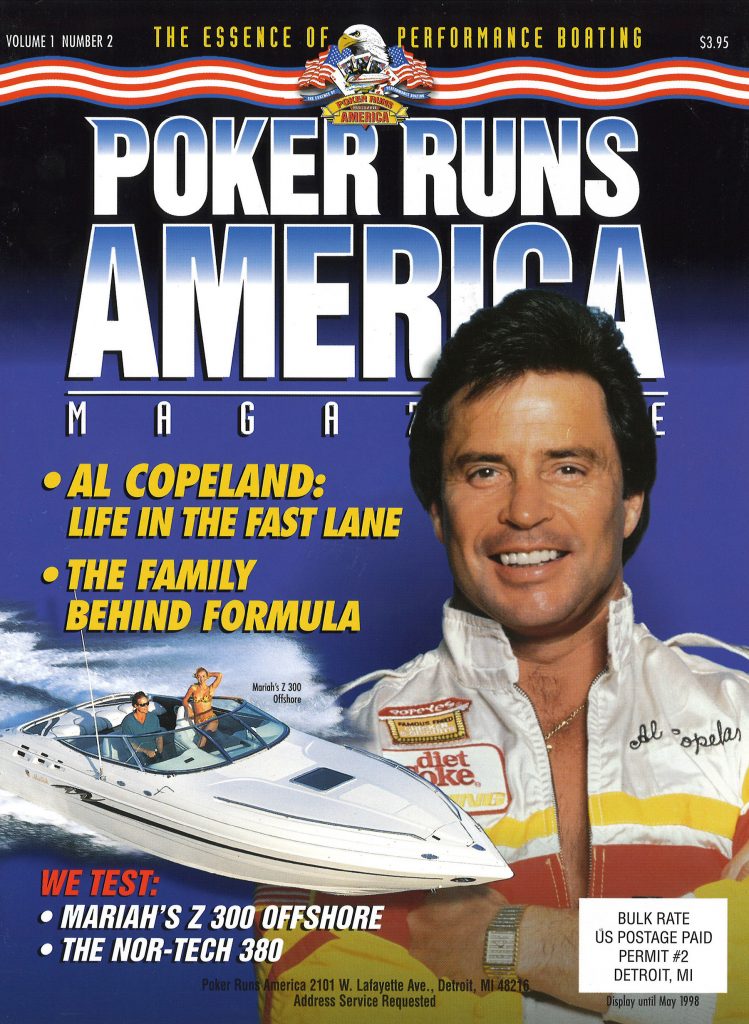
In the intensely competitive world of boat racing, as in big business, there is one hard and fast rule – WIN! What distinguishes Al Copeland from the majority of winners, however, is his strong sense of values and ethics. His meteoric rise to fame has earned a great deal of respect from his family, friends and peers. In fact, in his hometown he’s regarded as somewhat of a folk hero.
“I guess what people admire is that I started with nothing and I worked my way up every step of the way to get what I have today,” says Copeland, who was born and raised in New Orleans. “People don’t resent what I have and the way I use it. I can’t ask for anything better than that.”
From his early days, Copeland, the youngest of three brothers, was a man driven by an inner desire to be the best. After his parents divorced, he found himself living with his grandmother in the projects. By the time he reached the 10th grade, he decided to drop out of school to pursue his fortune.
“I remember working with this fellow at my first job as a soda jerk. He worked like a house on fire. When I asked him why, he replied, ‘Because I’m the best’. Those words did it for me, I knew then and there that I also wanted to be the best.”
In his formative years, Copeland sold baby food and worked at his brother’s doughnut shop. In 1972, he opened his own spicy Cajun-style chicken place, which he later named Popeyes (a la the movie, The French Connection). By the late 80s, he had more than 800 Popeyes and in 1989 he had bought 1400 Church’s Fried Chicken stores. In 1991, due to the crash in the junk bond market he was forced into bankruptcy. He walked out of bankruptcy with an in-perpetuity contract to supply Popeyes and Church’s around the world with spices, batter, red beans and other products through his Diversified Foods Company. He now owns some 20 Copeland’s Famous New Orleans Restaurants and Bars around the country, two Straya California Creole cafes in New Orleans (with another soon to be launched in Baton Rouge) and a new franchise concept, Wrap & Roll (“It’s like a tortilla with a gourmet meal inside.”) Both Straya and Copeland’s are decorated by Al’s wife, Luan, in a lavish art deco-type style he refers to as Nouveau Deco, replete with neon lights and gold panthers. He also has two Landmark Hotels and, last summer, opened the Grand Boutique above Straya on St. Charles St., featuring 44 luxury hotel suites.
The trendy restaurant and hotel are located in an abandoned Mercedes-Benz dealership outside the Garden District, and oddly enough, attracted the anger of vampire novelist Anne Rice, who lives nearby. Rice took out a full-page ad in the Times-Picayune newspaper to express her extreme disapproval of this “hideous” neighborhood intrusion. Copeland responded with a two-page ad of his own, chiding Rice for her ill-mannered attack. The case, which wound up in court, was recently thrown out by the judge.
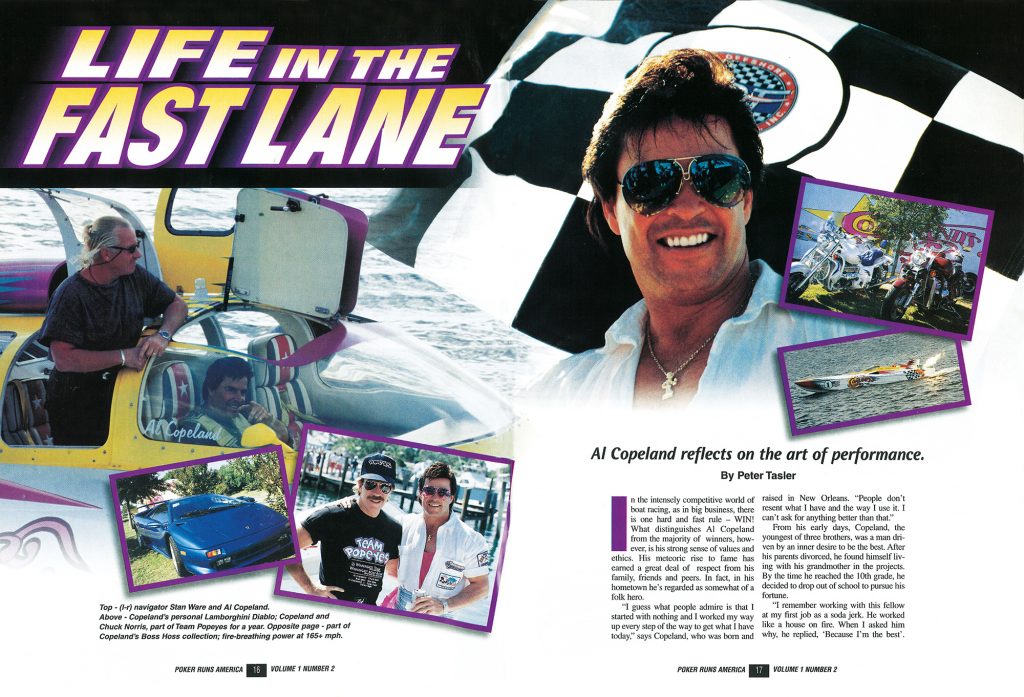
Right from top – Al Copeland. Part of Copeland’s Boss Hoss Collection. Fire-breathing power at 165+ mph.
“The judge said she had the right to freedom of speech,” says Copeland, adding that she did not win in the school of popular opinion. Various polls, including one by the Times-Picayune, showed in favor of the restaurant 3 to 1. All this happened around Mardi Gras in New Orleans.
“It became a big thing in New Orleans here. People had so much fun with it. There were some in the French Quarter dressed like Anne Rice, others like Al Copeland. In Mardi Gras I rode with a big wooden stake and a cross around my neck.”
Copeland, a self-confessed workaholic, is a strong believer in family togetherness, which he admits is often a very difficult thing to do “when you work the way I work. Family is very important to me. I believe in God, go to church on Sundays and I believe in right and wrong.”
Copeland’s strong penchant for family togetherness prompted him to buy a 22-acre property in Mandeville, a suburb of New Orleans, which he hopes to soon turn into an exclusive family compound, complete with houses for his children, its own private marina, stables, helicopter pad and a mansion that, every Christmas, will display his famed one million lights.
The fashionable man with the trademark black T-shirt, ostrich-skin cowboy boots and solid gold hoop earring is also an incurable romantic. On Valentine’s day 1991 he formally married his third wife (and former receptionist) Luan Hunter. The gala wedding took place at the New Orleans Museum of Art, with music provided by Kool & The Gang and Latoya Jackson. Outside, a helicopter showered the happy couple with thousands of rose petals.
Each year since then, the Copelands renew their wedding vows.
“The year before last it was on Laguna Negal Beach in California – on horseback,” explains Copeland. “Last year, we went to a place just outside Gatlinburg. There’s a place called Copeland’s Creek where, believe it or not, they first started running moonshine in the 30s. We had a shotgun wedding in a little cabin there because Luan was pregnant.”
Copeland has five children – two boys and three girls – from his previous marriages, ranging in ages from 17 to 30. All of his children work with him in his family business. “The oldest Al Jr., is doing a good job running the business,” says the proud father-to-be of a baby boy who will be born on February 2, 1998, Al’s birthday.
While Copeland still keeps close watch over his business ventures, he admits he does find more time to indulge in his recreational pursuits, one of which is boating – with the emphasis on speed. Copeland first discovered his love for power boating in the late 70s, when, on a quest for something that would enhance fun and relaxation on Sundays (“I worked every other day of the week,”), he bought a metal-flake speedboat with Oldsmobile engines.
“I didn’t know it at the time, but the fellow who solid it to me later told me it was the fastest boat on Lake Ponchartrain. The first time I had it out, two or three guys came out to race me right away. I won. The boat did 80 mph. Everybody was really impressed by the speed. That was real fast in those days. I was the fastest boat on the lake.”

Right from top – The stunning Copeland contingent in Biloxi, including Al’s opulent 120-foot yacht Cajun Princess.
A constant stream of challenges – and losses – led Copeland to indulge in a bigger boat, a deep-V powered by Gale Banks turbocharged motors. “The somebody beat me in that, and I realized that the next way to get any speed was to get a race boat, so I went to Don Aronow and I bought my first Cigarette. It was 37-1/2 feet. I put those Gale Banks motors in it. I never really intended to go offshore racing in it. I just wanted to be the fastest boat on the lake.”
But, as most performance boaters will attest, the need for speed, is a heady attraction and Copeland soon found himself with newly hired mechanic and throttleman Bill Sirois, getting deeper into the wild world of offshore racing. His first APBA race in California in 1980 was in a rented production Scarab called Pure Insanity.
“I decided to go in as a rookie. In those days they made rookies start 10 seconds behind the pack. I had never been on the ocean in my life. My friend Stan Ware, who has been my navigator throughout my whole career, and I went out partying the night before the practice run.”
“The next day the swells on the ocean were so big that the boat would jump clean out of the water, come back down to the bottom and knock the hell out of you, you’d think your brains had fallen out. I swore then that I could never again drink the night before a race, and I never did for 11 years after that.”
Copeland did, however, come away from his first race with a second-place win, finishing 10 seconds behind the leader – and without power steering, no mean feat!
“Winning that trophy gave me an incredible sense of victory,” Copeland recalls. From that point on, Copeland was hooked, even though he lost the next event, racing against top champions like Betty Cook. “My new Cigarette was the first out of the gate. Then they blew by us like we were tied to a post.”
Each year following, Copeland experimented with bigger and better motors and different boats, moving from a 30’ Flight Cat that was the first to do 100 mph on Mercury’s Lake X testing ground to the first Super Boat ever built.
Copeland went on to become unbeatable, racking up a World Championship in 1985 and six consecutive U.S. Championships. “We had the winningest team in racing history,” says Copeland with pride in his accomplishments. “During that period of time we broke every speed record there was, including the Miami to New York V-bottom record, a run of about 1140 miles in 20 hours and 42 minutes.”
A near fatal snowmobile accident in Lake Tahoe forced Copeland to take a long, hard look at his racing career.
“I was running about 100 mph when it flipped me. I went through three trees and landed up on my head just missing a pile of rocks. I broke my femur bone and both bones in my forearm. I wound up with a spinal cord injury as a result. I was in the hospital for about a month, in a wheelchair about three months and spent 45 days with a cane. The doctors told me if I went racing again and I twisted my neck in a certain way, I could cripple myself for life. That was a price I didn’t want to pay.”
Instead Copeland turned his attention to building turbine race boats. “I still wanted to have the fastest boats in the world, which I do.”
Howard Arneson built Copeland a 40’ Skater which runs 166 mph. He also recently completed a 46’ Skater which was a 17-month long project.
“We had it running at 159 mph on Lake Ponchartrain and Scotty (Barnhardt) my crew chief said that day we would clock 160. As soon as he did, one of the motors went out. As I pulled back the throttles before the boat calmed down and settled down in the water, we could see smoke coming into the cockpit. We lifted the hatch. The halon system had gone off. We hit the fire with three extinguishers, but it was like spitting on a fire. We had to jump into the cold water and just watched the boat burn. After all the time and energy it took to build it, it took only two minutes to destroy. I remember thinking to myself that I had just seen the Titanic the night before.”
Copeland has just completed the acquisition of a new 46’ Skater which he will start to build immediately. He still has his 40’ Skater, which he says he also brings to local poker runs. “They’re a lot of fun. Of course, my boat’s always the first one to get to the card stop, but that doesn’t really matter, does it. As far as luck goes, I never really win.”
Copeland, who still stays in top shape working out in his fully equipped home gym, also participates in another kind of poker run, where participants ride a unique, specially built motorcycle called a Boss Hoss.
“My wife gave me a Boss Hoss for my birthday a few years back. The stock bike
has a 350 cu in, 345 hp V-8 Corvette motor that does 0 to 50 in 1.5 seconds,”
says Copeland. “My own bike has a 383 cu in engine with 450 hp and nitrous
oxide for another 150 horses. They’re fine, fast and all-American.”
Copeland’s admiration for those motorcycle led him to buy the Boss Hoss dealership for the state, where he’s currently building a 600 hp model equipped with an automatic transmission. He also takes his motorcycles on tour at various events throughout the country, from Gatlinburg to Daytona to Sturgis. Recently, he showed up with boats – including the opulent 120-foot yact, the Cajun Princess (complete with Jacuzzis and mirrored bedrooms) – an eleven Boss Hoss motorcycles at the Biloxi races in Mississippi. While the boats are trailered, the motorcycles are transported in a custom Freightliner rig that, on occasion, also holds his royal blue Lamborghini Diablo. (His other driving car is a 600SL Sport V-12 Mercedes convertible).
“I went through that stage in life where I collected cars quite extensively,” explains Copeland, adding that he used to own about 50 cars. “I sold most of those off over the years. Now the only ones I’ve got left are a Lamborghini Countach, and a ’62 Cadillac convertible … I stick mainly to cars I like to drive because it’s no fun if you can’t really drive them and enjoy them.”
These words strike very close to the heart of the philosophy that is behind the professional and personal success of Al Copeland. As he puts it, “If I can’t play with it and have fun with it, I don’t want it anymore.”



